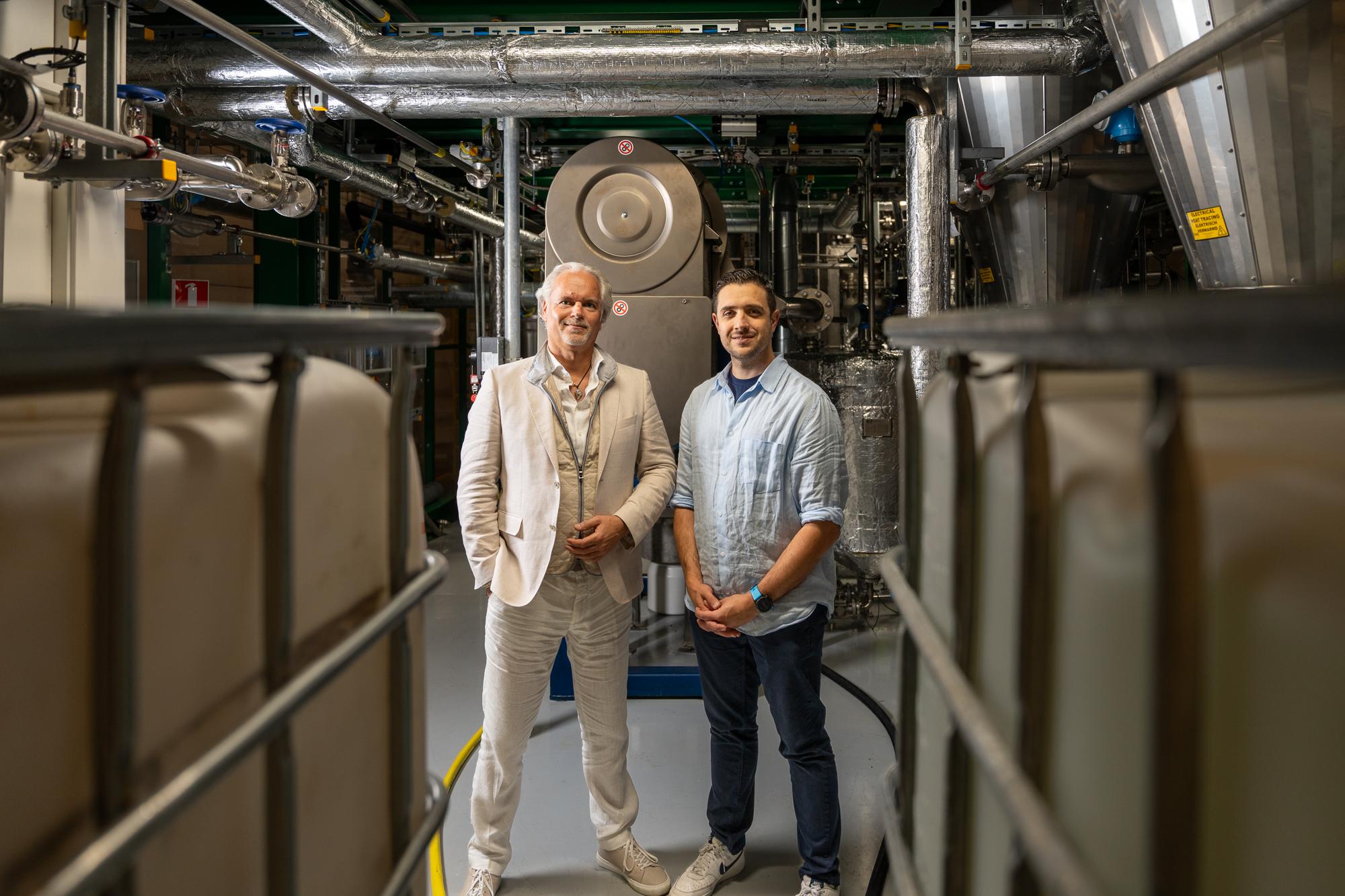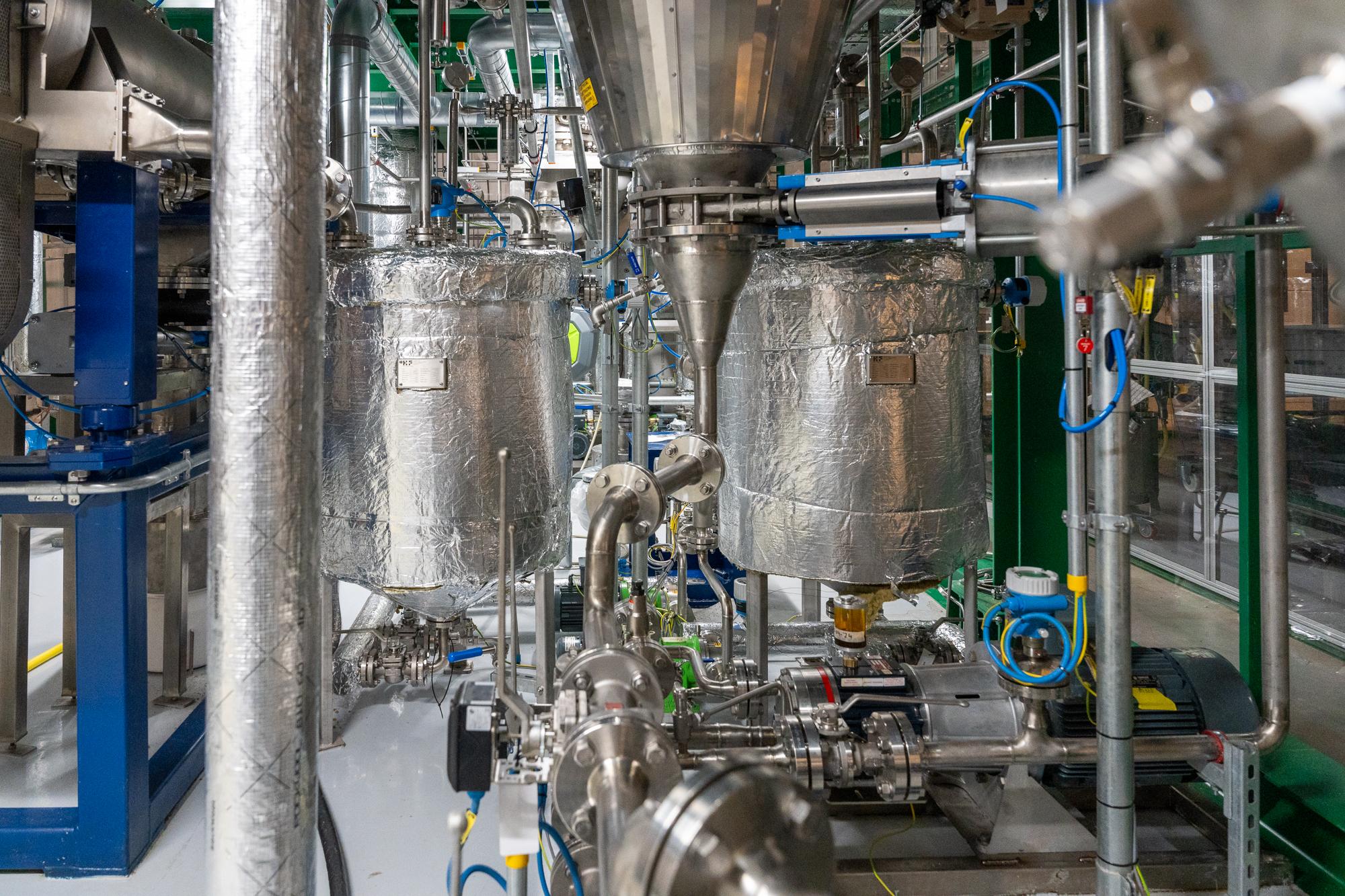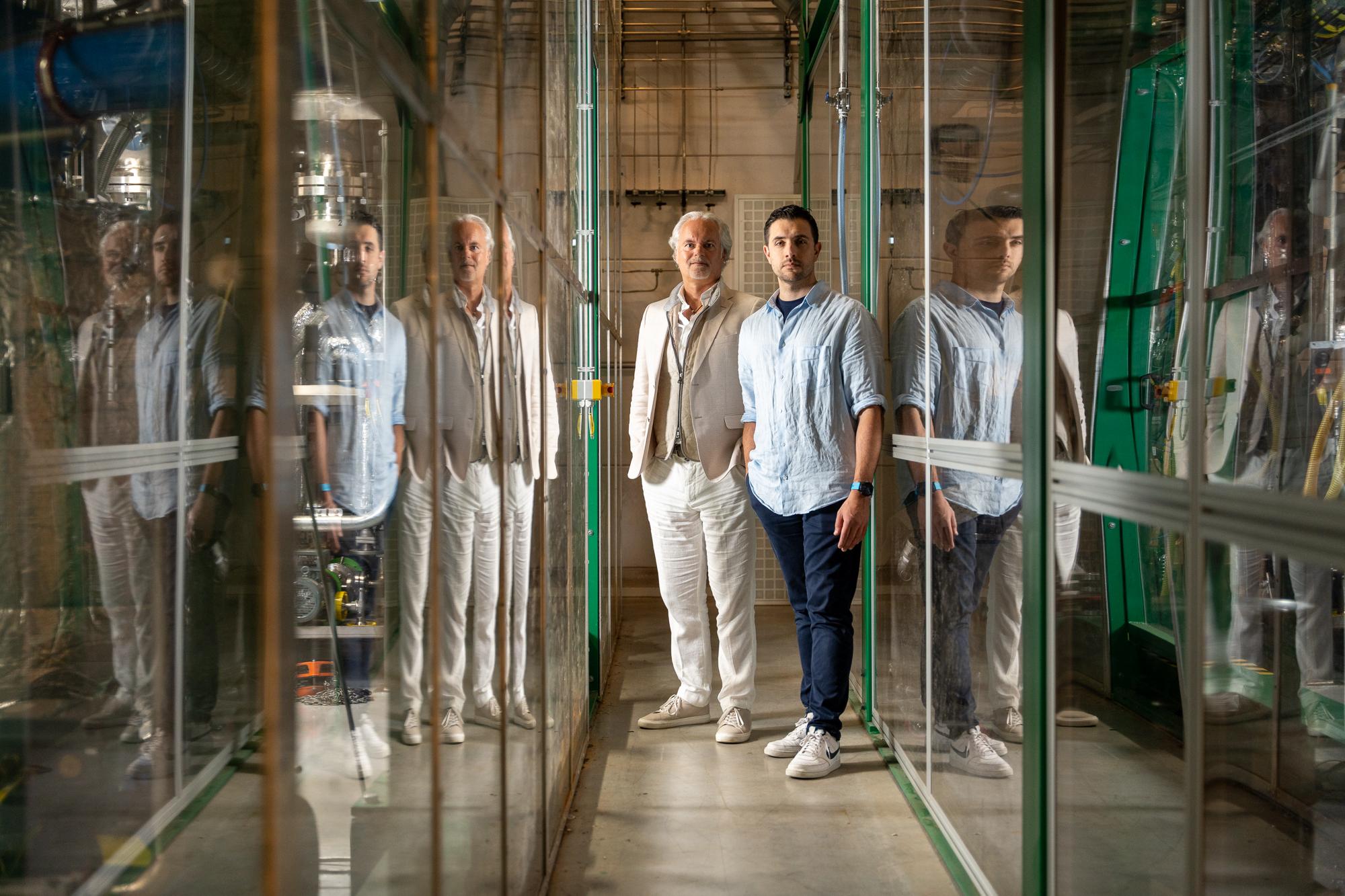Vertoro, a chemical startup with academic roots, is taking a revolutionary step in the energy transition. "We convert woody and agricultural residues into a wide range of bio-based chemicals, materials and fuels," says Dr. Michael Boot, co-Founder & co-CEO.
In pictures: Drs. Tim van Helsland (co-CEO & CFO) and Dr. Panos Kouris (co-Founder & CTO)

"We want to accelerate the green revolution by providing a bio-based alternative to fossil resources."
About Vertoro
Vertoro is a spin-off company from a public-private partnership between Brightlands Chemelot Campus, DSM, Chemelot InSciTe, Maastricht University (UM) and Eindhoven University of Technology (TU/e). The partnership was established in 2017 by Founders Michael Boot and Panos Kouris. "Vertoro is derived from the Spanish words 'verde' (green) and 'oro' (gold), which together mean 'green gold.' Where we know black gold as petroleum, we produce a more sustainable variant of fossil oil. Our logo symbolizes a gold-green oil drop," explained Boot.
Green petroleum
The oil will be used primarily as a renewable marine fuel. "We are trying to give nature a hand," says Boot. "In the deep underground lie plant and animal remains from millions of years ago. Under the influence of pressure and heat, this creates natural gas or oil that slowly rises to upper layers. But of course we don't have time for that. Using various chemical processes, we can accomplish this in a factory in a much shorter time. The next step is to determine where we can sell a barrel of oil at the best price."
"The shipping sector accounts for about 2 to 3 percent of global CO2 emissions, making it a good place to start."
Sustainable marine fuel
Climate change starts with addressing fossil fuel combustion. "The shipping sector accounts for about 2 to 3 percent of global CO2 emissions, making it a good place to start," Boot continued. "Because of various EU legislation, especially in the transport sector, there are mandates to blend a minimum percentage of biofuel. This applies to both marine fuel and jet fuel. Because these mandates are mandatory, prices for sustainable products are favorable.
The materials and chemical sectors lack such mandates, so demand for sustainable products must come voluntarily from companies. The willingness to pay for this is much lower than in the maritime and aviation sectors, where there is no choice; they must meet blending obligations. Every year these obligations get higher, with a target of 100% blending by 2050."

Making an impact quickly
When considering different applications such as marine and aviation, marine engines prove to be much more tolerant. Boot explains, "These engines can even use asphalt-like fuels, while the technical requirements for aviation fuels are much stricter. A marine engine is huge, sometimes even bigger than a house. To give you an idea, a cylinder in your car is about the size of a Coke can, while a cylinder in a ship is the size of your living room. These huge and robust engines can burn almost anything, which is ideal for us to start with. In addition, the willingness to pay is high in this industry, partly due to legislation. So customers are also willing to pay premiums for renewable fuels.
We have therefore chosen to focus first on the simpler applications such as marine fuel. This is the most accessible option and allows us to make an impact quickly. We have also found a good investor for this: Maersk, a Danish company and the second largest shipping company in the world."
"Step by step we are moving toward that 1% in 2050. Our technology makes that possible."
Being good to the planet
What gives you the most satisfaction? "That we are doing our part to combat global warming," says Boot. "Once we made a presentation to a potential U.S. investor about what we could achieve with our technology. A comprehensive roadmap for addressing 1% of global CO2 emissions rolled out of that. This plan describes how many plants we need to build in as many years, in different locations worldwide, with specific raw materials and all costs. In principle, that is an achievable plan.
Step by step we are moving toward that 1% by 2050. Our technology makes that possible. It is incredibly satisfying that we can potentially make such a big impact on everything that lives on this planet, including our own children."

Dot on the horizon
According to the engineer, in five years their technology will have been rolled out both in the Netherlands and in several strategic locations worldwide. "The first ships will then sail on our oil across international seas," Boot said. "This is certainly feasible. However, it will require huge investments. To build a commercial plant you are easily a quarter of a billion euros away. And to achieve that 1% reduction in CO2 emissions, you really need to build hundreds of these plants over the next 25 years. Those are huge sums of money."
Keep it simple!
Tip from Boot: "Work toward implementing your technology or product as simply and inexpensively as possible. Making it prettier and more complex can always be done later. Many technical people, myself included, make the mistake of wanting things to be perfect right away. That never works well enough. You actually want to bring version 10.0 to market while version 1.0 isn't even finished yet. That's a trap.
Start with a Minimal Viable Product (MVP), something that is feasible and that you can make money with. We took our technology down to the essentials, really super simple. We start with shipping because that sector has a pressing problem. Usually we tend to go for the trendiest, sexiest or most luxurious option. But there you have a lot more competition. Everyone goes for whatever is "hot" at the time. Often there is low-hanging fruit that may not capture the imagination as much, such as a container ship, but that can be very lucrative and where you can already make an impact with relatively little effort."
Thinking big and dreaming big
In conclusion, he says, "The investment climate in the Netherlands is characterized by a tendency to think small, while the rest of the world thinks big. You are allowed to dream big; you are not a narcissist if you say you want to build a 'billion dollar company'. China, America and the rest of the world think this way. If we continue to think small in the Netherlands, we will continue to score small. The biggest companies in the world are not in Europe, but in countries that dare to dream big.
'Just act normal, you'll be crazy enough' doesn't help us save the planet. Instead, you have to dare to make radical decisions and take huge risks. Modesty doesn't work when you have to solve biggest world problems. That is a fact. And we can think all kinds of things about that, but it is and remains the truth."